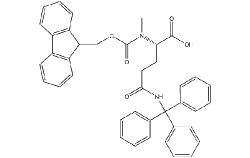Study on structure confirmation of synthetic peptide drugs
The main purpose of studying the structure of peptide is to determine whether its amino acid composition and sequence are correct. If there is cysteine in the peptide molecule, its state (oxidation state or reduction state) should be determined, and for peptides containing multiple cysteine, the correct connection site of the disulfide bond should be determined. For some long peptides, it may be necessary to use nuclear magnetic resonance, binary chromatography and other methods to study their spatial structure (such as secondary and tertiary structure).

Confirmation of short peptide structure
For short peptides, elemental analysis, infrared spectroscopy, nuclear magnetic resonance spectroscopy, amino acid composition analysis, mass spectrometry and other common methods are sometimes sufficient to illustrate their structural characteristics. If the information obtained by the above tests is difficult to be reasonably analyzed and attributed, amino acid sequence determination should be performed.
Structural confirmation of medium-length peptides
Amino acid composition and amino acid sequence analysis should be performed for medium and long peptides. The common method for elucidation of amino acid sequence is Edman degradation, which is a chemical method for determination of n-terminal amino acids. Mass spectrometry based on a variety of techniques, such as fast atom bombardment, electrospray, field resolution and laser resolution mass spectrometry, can provide molecular weight and sequence information of peptides, which is a good complement to Edman degradation.
In the study of the structure of medium and long peptides, although ultraviolet spectroscopy, infrared spectroscopy, nuclear magnetic resonance spectroscopy, etc., can provide limited information for analysis, but in some cases, the above studies should be considered. For example, when a structural confirmation reference is available, the comparative determination of the above spectrogram is of great significance for explaining the structure of the developed product; For peptides with new structures, the above studies can also provide supplementary information for the description of the peptide structure, and provide information for quality studies and quality standards.
For peptides containing more than 20 amino acid residues, if the sequence can not be directly determined, according to the molecular weight of the peptide and amino acid composition characteristics, the peptide can be cleaved into small fragments using a highly specific proteolytic enzyme (usually peptide chain endonuclease), and then the sequence of each small fragment can be analyzed.
When the peptide contains unnatural amino acids and amino acid derivatives, it should be demonstrated in structural studies. At this time, the chromatographic behavior of these unnatural amino acids and amino acid derivatives should be investigated in the corresponding studies.
In custom peptide synthesis, the study of structure confirmation of synthetic peptide drugs plays a crucial role in the follow-up experiments, and hope this article will be helpful to you.
Read Related Articles:
Copyright © 2020 Omizzur Inc | Terms & Conditions | Privacy Notice | Sitemap